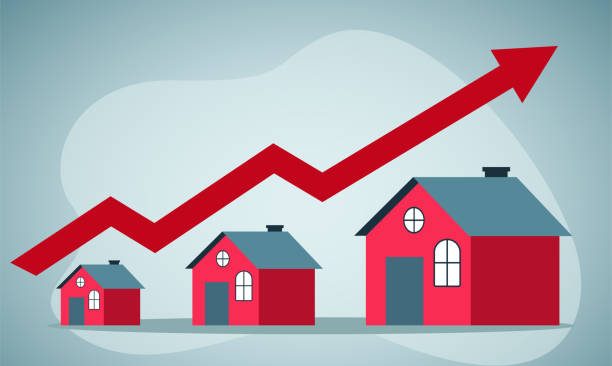A properly functioning HVAC system is essential for keeping homes and businesses comfortable throughout the year, especially in Kansas, where summers bring intense heat and winters require reliable heating. Over time, HVAC systems experience wear and tear, leading to inefficiencies, breakdowns, and higher energy costs. While some issues may seem minor at first, ignoring them can result in more significant problems that require expensive repairs or even full system replacements. Working with a trusted HVAC company in Lenexa and Overland Park ensures that common HVAC problems are diagnosed and resolved before they escalate. Professional technicians have the expertise to identify underlying issues, restore system efficiency, and help homeowners avoid unnecessary expenses. According to General Tools, regular maintenance and timely repairs are crucial in preventing HVAC failures and ensuring optimal performance. Understanding the most frequent HVAC issues and knowing when to call in professionals can save time, money, and frustration. Here are some of the most common HVAC problems homeowners and business owners encounter, along with solutions that an experienced HVAC company can provide. Inconsistent Heating or Cooling One of the most frustrating issues with an HVAC system is uneven temperature distribution throughout a home or office. Some rooms may feel too warm, while others remain uncomfortably cold. This problem often stems from airflow restrictions, improper thermostat settings, clogged filters, or ductwork leaks. When airflow is restricted due to a clogged filter or blocked vents, the system struggles to distribute air evenly. Regularly changing filters and ensuring that vents remain unobstructed can improve airflow and help maintain consistent temperatures. If the issue persists, the problem may lie in the ductwork. Leaky or improperly sized ducts can cause heat or cooled air to escape before reaching the intended rooms. An HVAC technician can inspect and seal any leaks, balance airflow, and recalibrate the system to ensure optimal performance. Additionally, upgrading to a programmable or smart thermostat allows for better temperature control, helping to eliminate hot and cold spots in the home. Frequent Cycling or Short Cycling HVAC systems are designed to operate in cycles, turning on and off as needed to maintain a comfortable temperature. However, if a system is frequently cycling or shutting off too soon, it could be a sign of an underlying issue. Short cycling can result from a dirty air filter, an improperly sized unit, thermostat malfunctions, or low refrigerant levels. A system that is too large for a home may cool or heat the space too quickly, causing it to shut off before completing a full cycle. Conversely, low refrigerant levels can cause the system to overwork itself, leading to rapid cycling. A failing thermostat can also contribute to short cycling by inaccurately reading indoor temperatures and sending incorrect signals to the system. An HVAC technician can assess the unit’s size, check for refrigerant leaks, clean or replace the filter, and recalibrate or replace the thermostat to ensure the system functions efficiently. Ignoring this problem can lead to excessive wear on components, increasing the risk of breakdowns and shortening the system’s lifespan. Strange Noises Coming from the HVAC System Unusual sounds coming from an HVAC system are often the first indication of a mechanical problem. While a properly functioning system may produce a soft hum, loud banging, grinding, rattling, or squealing noises suggest potential issues. Different sounds can indicate specific problems, such as loose components, motor malfunctions, or airflow obstructions. A banging noise might signal a loose blower fan or an unbalanced component inside the unit. Grinding or squealing sounds could indicate a worn-out motor bearing or a failing belt. Rattling noises often point to debris inside the system or loose ductwork connections. Attempting to diagnose and repair these issues without professional expertise can be risky. An HVAC technician can inspect the system, tighten loose components, lubricate moving parts, and replace any damaged or worn-out elements to restore quiet and efficient operation. Addressing unusual sounds early can prevent minor issues from developing into costly repairs. Weak Airflow or No Air Coming from Vents When an HVAC system is running but barely producing airflow, it becomes ineffective at maintaining a comfortable indoor environment. Weak airflow can be caused by clogged filters, blower motor failure, ductwork blockages, or a malfunctioning fan. Dirty air filters restrict airflow, forcing the system to work harder to push air through the ducts. Over time, this added strain can lead to overheating and system failure. Blower motor issues can also reduce airflow, preventing the system from circulating air properly. In some cases, disconnected or collapsed ductwork can prevent air from reaching certain rooms. An HVAC technician can inspect the entire system, clean or replace filters, repair or replace the blower motor, and ensure that ducts are intact and free of obstructions. Addressing these issues promptly improves air circulation and enhances the overall efficiency of the HVAC system. Refrigerant Leaks and Cooling Issues Air conditioners rely on refrigerant to absorb heat from indoor air and cool the space efficiently. If refrigerant levels are low, the system will struggle to maintain desired temperatures, leading to longer cooling cycles and reduced efficiency. Refrigerant leaks can occur due to corrosion, loose connections, or damage to the coils. Unlike simple maintenance tasks, handling refrigerant requires specialized training and certification. An HVAC professional can locate and repair leaks, recharge the system with the correct amount of refrigerant, and ensure that cooling performance is restored. Attempting to add refrigerant without sealing leaks can result in further damage and unnecessary expenses. HVAC System Won’t Turn On A non-responsive HVAC system can be frustrating, especially during extreme weather conditions. Several factors can cause the system to fail, including electrical issues, a malfunctioning thermostat, or a tripped circuit breaker. Checking the thermostat settings and ensuring the circuit breaker hasn’t tripped are simple troubleshooting steps homeowners can take. If these do not resolve the issue, there may be a problem with the wiring, capacitor, or control board. An HVAC technician can diagnose the root cause, replace faulty components, and restore power to the system. Regular maintenance helps














